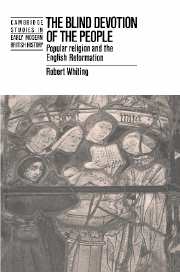Summary
A narrow neck of land, some 35 miles in width, constituted the sole physical connection between the south-western peninsula and the mainland of Tudor England. Since even this was largely blocked by the Blackdown and Brendon hills, access was normally restricted to the Blackdown–Brendon gap and to the Axe Valley. From this neck the peninsula thrust westwards for some 130 miles: it first broadened to a width of more than 70 miles in Devon, and then narrowed rapidly towards Cornwall's western tip. A ride of at least four days separated east Devon from London. Cornwall was even more remote: it retained its Celtic place names and, particularly in its western districts, its Celtic tongue.
The northern coast of the peninsula was bounded by the Bristol Channel and the Atlantic, and its southern coast by the English Channel. From the lowlands arose extensive areas of hill country and three expanses of highland – Exmoor, Bodmin Moor and the central granite mass of Dartmoor. Streams, rivers and estuaries were abundant. The Taw, Torridge and Camel flowed to the northern coast, but most of the important rivers – including the Exe, Teign, Dart, Plym, Tamar, Fowey, Fal and Helford – ran south. Several originated on Dartmoor, the height of which combined with the maritime environment to ensure a heavy fall of rain.
Patterns of economic activity were largely determined by this physical matrix.
- Type
- Chapter
- Information
- The Blind Devotion of the PeoplePopular Religion and the English Reformation, pp. 7 - 14Publisher: Cambridge University PressPrint publication year: 1989



